Introduction
Dogs are remarkable communicators, often expressing their feelings through body language. Unlike humans, who rely heavily on verbal cues, dogs use a combination of posture, facial expressions, and movements to convey emotions. This nonverbal communication is critical for understanding what your furry friend is saying. By accurately interpreting these signals, you can foster a stronger bond with your pup and avoid misunderstandings that could lead to unwanted behavior.
Understanding dog body language is not just beneficial for establishing a deeper connection; it can also prevent potential conflicts. Imagine the look on your dog’s face when they feel anxious—if you miss that signal, things could get hairy! Moreover, it’s essential to recognize that body language can vary significantly across different dog breeds. Small breeds may express emotions more subtly, while larger breeds may be more overt and dramatic in their signals. Let’s unravel the fascinating world of canine communication!
For those eager to deepen their understanding, I highly recommend picking up “The Art of Raising a Puppy” by The Monks of New Skete. This book provides invaluable insights into dog training and behavior, helping you navigate through your pup’s early days with ease.
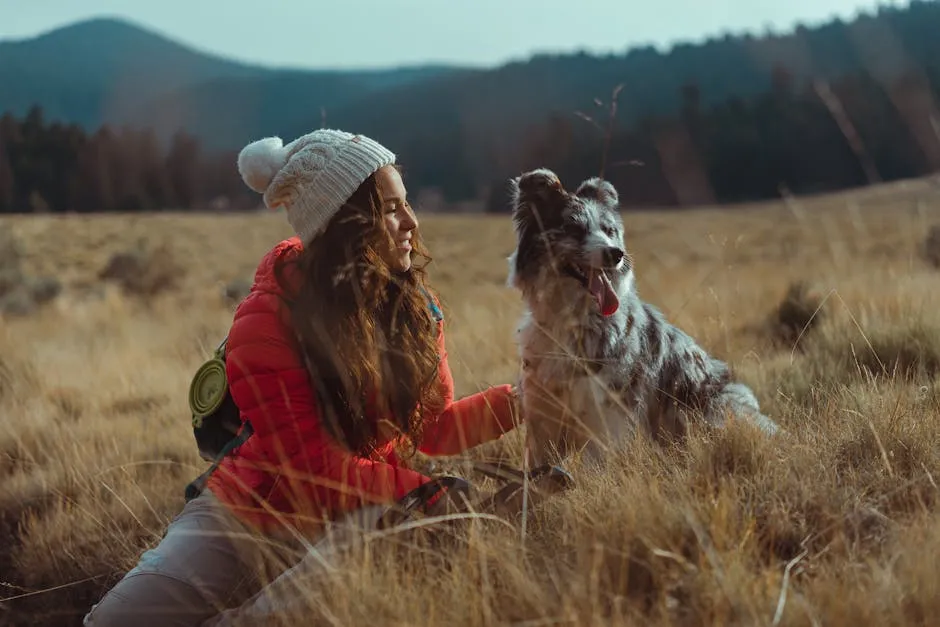
The Basics of Dog Body Language
Key Elements of Dog Communication
Dog body language consists of several key elements that play a crucial role in how they express themselves. These include posture, tail position, facial expressions, and vocalizations. Each element works together to provide insight into a dog’s emotional state.
Posture is a primary indicator. A relaxed dog will have a loose body, while a tense dog might appear rigid. The position of the tail also tells a story. A wagging tail may seem friendly, but the type of wag can indicate excitement or anxiety. Facial expressions are equally important. Dogs can convey happiness, fear, or aggression through their eyes and mouth. Lastly, vocalizations—like barking and whining—complement body language, providing additional context to their feelings.
Understanding these components is vital. They help you interpret what your dog is feeling, whether it’s joy, fear, or even aggression. By being attentive to these signals, you can respond appropriately, ensuring your dog’s emotional well-being.
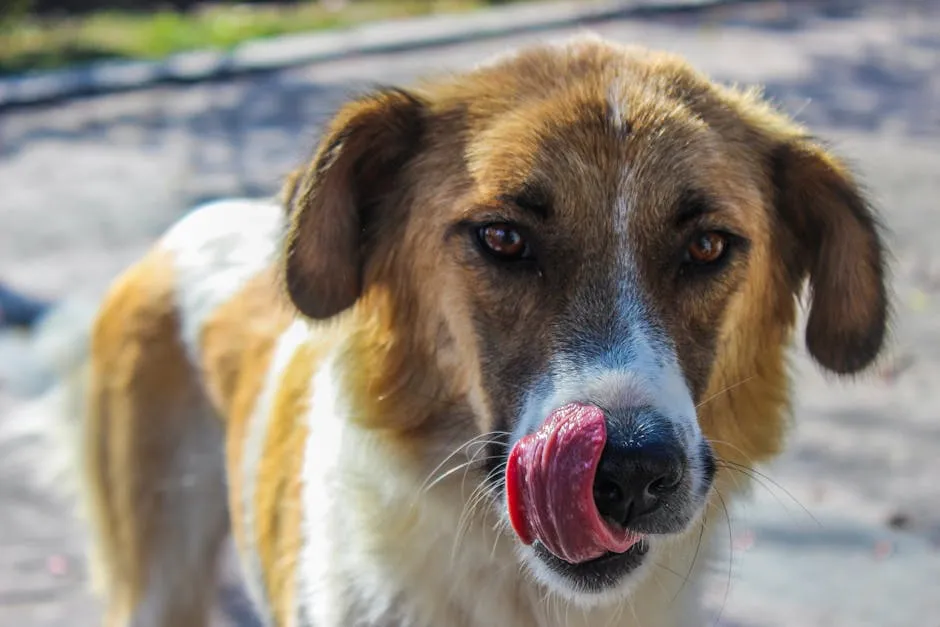
Speaking of well-being, a Thundershirt Classic Dog Anxiety Jacket can work wonders for anxious pups. It provides gentle, constant pressure, calming them down during stressful situations like thunderstorms or fireworks. Your dog will thank you for it!
Common Body Language Signals
Tail Wagging
Tail wagging is perhaps the most recognizable form of dog communication. However, not all wags are created equal! A fast wagging tail held high often indicates excitement—think of your dog greeting you after a long day. On the flip side, a slow wag with the tail held low could signal insecurity or fear.
Posture
Posture can speak volumes. A dog that stands tall with its weight shifted forward may be feeling confident or even aggressive. Conversely, a dog that lowers its body and tucks its tail may be signaling submission or fear. Recognizing these differences helps you gauge your dog’s mood.
Facial Expressions
Facial expressions reveal a dog’s emotional state. A relaxed dog often has soft eyes and an open mouth. In contrast, a dog displaying a tense face, with its lips pulled back or eyes wide, could be feeling stressed or threatened.
By becoming familiar with these common signals, you can enhance your understanding of your dog’s emotional world, improving the relationship you share.

To ensure you’re ready for any grooming needs, consider investing in the Hertzko Self Cleaning Slicker Brush. It makes grooming a breeze, ensuring that your pup looks as fabulous as they feel!
Body Language Variations Across Breeds
Understanding the intricacies of dog body language is essential for any dog owner. Each breed has unique ways of expressing emotions, and these differences can be quite pronounced. Let’s break down how body language varies across small, medium, and large dog breeds.
Small Breeds (e.g., Dachshunds, Chihuahuas)
Small dog breeds often communicate their feelings through more subtle body language. Their compact size may lead to them feeling vulnerable, prompting them to use less overt signals. For instance, a Dachshund might express excitement with a quick tail wag or a slight bounce, while a Chihuahua may display affection by leaning into you.
But don’t be fooled! Small dogs tend to be quite protective. Their instincts drive them to bark at perceived threats, often signaling their readiness to defend their territory. This protective nature can lead to a mix of signals—like barking combined with a tense posture—indicating both excitement and concern. Understanding these nuances helps owners respond appropriately, preventing misunderstandings during interactions with other dogs or people.
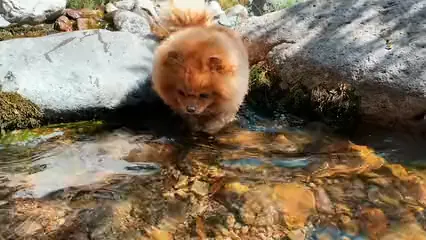
For training those small pups, consider the PetSafe Clik-R Dog Training Clicker. It’s a fantastic tool for positive reinforcement, making training sessions fun and effective!
Medium Breeds (e.g., Beagles, Bulldogs)
Medium-sized breeds often balance playfulness with seriousness, showcasing a variety of communication styles. Beagles, known for their curious nature, may exhibit a playful bow—front legs stretched forward while the rear remains high—to invite you to engage in play. Conversely, Bulldogs might show more straightforward signals. A relaxed Bulldog will often sit with a loose body, while a tense Bulldog might puff up slightly, indicating discomfort or readiness to defend itself.
Unique signals exist among medium breeds, like the Beagle’s signature “bay” bark, which can convey excitement or a desire to chase. Bulldogs, on the other hand, may snort or grunt, which can signal happiness or curiosity. Recognizing these breed-specific signals can enhance interactions and strengthen the bond between owner and dog.
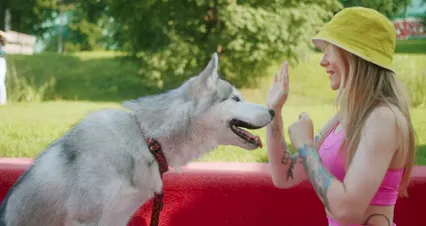
Don’t forget to keep your medium-sized companion hydrated during those play sessions! A MalsiPree Dog Water Bottle is perfect for on-the-go hydration, ensuring your pup stays refreshed and ready for action!
Large Breeds (e.g., German Shepherds, Golden Retrievers)
Large breeds are often more direct in their body language, thanks to their size and presence. German Shepherds, known for their role as working dogs, tend to display confidence through assertive postures. A relaxed Shepherd might stand tall with a wagging tail, while a tense one may lower its head and curl its tail towards its body, signaling discomfort or fear.
Golden Retrievers, famous for their friendly demeanor, use clear signals to express joy. When a Golden greets you with a wagging tail and a wide-open mouth, it’s a sign of pure happiness. Their eagerness to interact often manifests as playful bouncing, inviting you to join in their fun. The role these breeds play—be it herding, working, or companionship—directly influences their communication style, making it essential for owners to understand their unique signals for better interaction.

To keep your large breed comfortable, consider a cozy Furhaven Pet Dog Bed. It’s designed for ultimate comfort, ensuring your furry giant has a perfect place to rest after a long day of play!
Brachycephalic Breeds (e.g., Bulldogs, Pugs)
Brachycephalic breeds, like Bulldogs and Pugs, have distinct physical characteristics. Their flat faces and short muzzles can complicate how they express emotions. This unique structure can limit their ability to show typical body language. For instance, a Pug might look like it’s frowning when it’s actually relaxed. It’s like trying to read a book with the pages glued together—frustrating, right?
Communication limitations arise due to these breeds’ unique features. With less expressive facial movement, these dogs may struggle to convey excitement or fear. Their inability to pant effectively can affect their breathing, which may lead to stress. Imagine trying to shout for help, but all that comes out is a wheeze.

Adaptations emerge as brachycephalic breeds learn to communicate in other ways. They often rely on their overall body posture and tail movement. A wagging tail can still signal joy, even if their face doesn’t match the emotion. Understanding these adaptations is essential for owners. You can’t just take their grunts and snorts at face value; you’ve got to interpret the whole package!
Understanding Context in Dog Body Language
Situational Awareness
Context plays a crucial role in interpreting dog body language. For example, a dog may exhibit the same behavior during playtime and during a stressful situation, but the meaning can differ greatly. During play, a wagging tail and playful growls indicate excitement. However, the same dog may growl and show teeth when feeling threatened. It’s like a sudden plot twist in a movie—what seems friendly can quickly turn sour without context.
Take the play bow, for instance. In a relaxed environment, it’s an invitation to play. Yet, if another dog is in its space, the same gesture could signal discomfort. Recognizing these nuances helps prevent misunderstandings and potential conflicts between dogs and their owners.

Social Interactions with Other Dogs
A dog’s breed can significantly influence how it interacts with others. Bulldogs, known for their stubbornness, often use more assertive signals, while Pugs may show submission. Each breed has unique play styles and communication cues. Understanding these differences is vital for ensuring safe and enjoyable playtime.
Consent in dog play is equally important. Just because a dog appears playful doesn’t mean it’s ready to engage. For example, if a dog approaches another with a low tail and averted eyes, it might be signaling discomfort. Observing these behaviors helps ensure that both dogs are comfortable and consenting to play. Remember, it’s not just about having fun; it’s about ensuring everyone plays happily and safely!
Signs of Stress and Anxiety in Dogs
Recognizing Stress Signals
Every dog, regardless of breed, has its own ways of showing stress and anxiety. Understanding these signals can help prevent misunderstandings, ensuring our furry friends feel safe and loved. Common signs of stress include panting, pacing, and excessive licking. If your dog is constantly looking away or avoiding eye contact, it might be trying to communicate discomfort.
Breed traits can influence how these signals are expressed. For example, small breeds like Chihuahuas often exhibit anxiety through more subtle behaviors, such as trembling or hiding. Larger breeds, such as German Shepherds, may show stress through more overt signs like barking or growling. Recognizing these nuances is key. A fast wagging tail might seem friendly, but it can also indicate nervous energy, especially if the dog appears rigid.
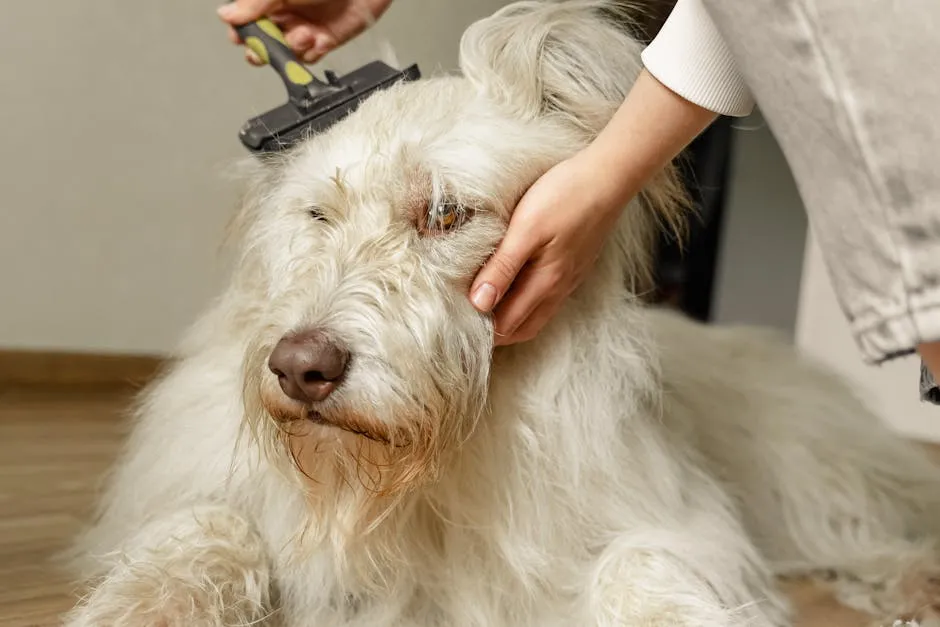
Understanding the context is essential. A dog may act differently at home versus in a new environment. For instance, a usually confident Golden Retriever may cower when faced with unfamiliar dogs. By paying attention to the specific behaviors and their context, you can better understand your dog’s emotional state.
To help manage your dog’s stress, consider a Pet First Aid Kit by Pet Magasin. It’s a must-have for every dog owner, ensuring you’re prepared for any minor accidents or emergencies!
Managing Stress in Dogs
Helping your dog feel more comfortable and secure is a team effort. First, create a safe space where your dog can retreat when feeling anxious. This could be a cozy bed in a quiet corner or a designated “doggie den.” Make sure this space is free from distractions and noise.
Next, observe your dog’s body language closely. If you notice signs of stress, try to remove them from the stressful situation if possible. For example, if your dog becomes anxious during a thunderstorm, a calming wrap or anxiety vest can help alleviate some of that stress.

Engaging in regular exercise is another fantastic way to combat anxiety. Walks, fetch, or even a romp in the backyard can help release pent-up energy and reduce stress. Additionally, consider interactive toys or puzzle feeders. They stimulate your dog’s mind and keep them engaged, which can distract from anxious thoughts.
If you’re looking for an interactive toy, the Outward Hound Hide-A-Squirrel Puzzle Toy is a delightful way to keep your dog entertained while also providing mental stimulation!
Training can also play a significant role. Positive reinforcement techniques, like rewarding calm behavior, can encourage your dog to respond better in stressful situations. Finally, don’t hesitate to seek professional help if your dog’s anxiety seems overwhelming. A qualified trainer or behaviorist can provide tailored strategies to manage stress effectively.
Conclusion
Understanding body language is vital for nurturing a deep bond with your dog. By recognizing signs of stress and anxiety, you can respond promptly and appropriately, enhancing your relationship. Observing your dog’s behaviors not only helps you meet their needs but also fosters trust and communication.
Encouraging your dog to express itself freely leads to a happy, confident canine. Remember, dogs communicate continuously—take the time to listen. The stronger your connection, the more rewarding your time together will be as you navigate the delightful world of canine companionship.

For a fun way to celebrate your love for dogs, check out the Funny Dog Socks that will have everyone smiling!
FAQs
What are the most common body language signals in dogs?
Dogs have a rich vocabulary of body language. Understanding these signals can make you a canine communication expert! Tail Wagging: Not all wags are happy ones! A high, fast wag usually indicates excitement or joy. However, a slow wagging tail held low may signal insecurity or fear. Ear Positions: Ears perked up mean a dog is alert and interested. Ears laid back or tightly pinned against the head typically indicate fear or submission. Facial Expressions: A relaxed dog often has soft eyes and a slightly open mouth. Conversely, a tense face with pulled-back lips or wide eyes can suggest anxiety or aggression. By observing these signals together, you can better understand your dog’s emotional state and respond accordingly!
How can I tell if my dog is happy or stressed?
Identifying whether your dog is happy or stressed is crucial for their well-being. Happy Dogs: Look for a wagging tail, relaxed body posture, and a playful demeanor. Dogs may also greet you with an open mouth and soft eyes. A playful bow—front legs stretched out, rear end in the air—is a classic sign of joy! Stressed Dogs: Stress signals can be more subtle. Excessive panting, pacing, or licking their lips may indicate anxiety. A dog that avoids eye contact or turns their head away is likely feeling uncomfortable. Pay close attention to context. A wagging tail in a crowded area could be excitement or nervousness. Understanding these cues will help you provide the support your dog needs.
Do different breeds have unique body language?
Absolutely! Each breed has its unique way of expressing emotions, influenced by their history and physical characteristics. Small Breeds: Dogs like Chihuahuas are often more subtle in their signals. They may display anxiety through trembling or hiding. Medium Breeds: Beagles and Bulldogs balance playfulness with seriousness. A Beagle might use a playful bow to invite you to play, while a Bulldog may show a more relaxed demeanor. Large Breeds: Larger dogs, such as German Shepherds, are often more direct in their communication. They may express confidence or discomfort clearly through body posture. By learning about breed-specific body language, you can enhance communication with your furry friend.
How can I improve my dog’s body language?
Improving your dog’s body language communication involves socialization and training. Socialization: Expose your dog to various environments, people, and other animals. This helps them learn appropriate responses and reduces anxiety in new situations. Training: Use positive reinforcement techniques to teach your dog commands and encourage calm behavior. The more they understand your cues, the better they’ll communicate! Observation: Pay attention to your dog’s unique signals. This helps you respond better and strengthens your bond. With time and patience, your dog will become a master communicator!
When should I seek professional help for my dog’s behavior?
Knowing when to seek help is essential. If you notice frequent signs of anxiety, aggression, or distress, it may be time to consult a professional. Signs to Watch For: If your dog consistently displays calming signals, like lip licking or avoiding eye contact, they may be feeling overwhelmed. In extreme cases, aggressive behaviors like growling or snapping can indicate serious distress. Consult a Trainer or Behaviorist: These professionals can provide tailored strategies to address specific issues. They’ll help you understand your dog’s body language and improve communication. Remember, seeking help early can prevent problems from escalating. Your dog’s well-being is worth it!
Please let us know what you think about our content by leaving a comment down below!
Thank you for reading till here 🙂
All images from Pexels





